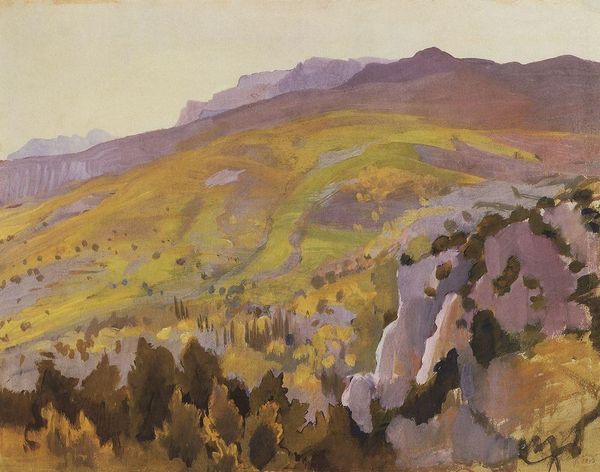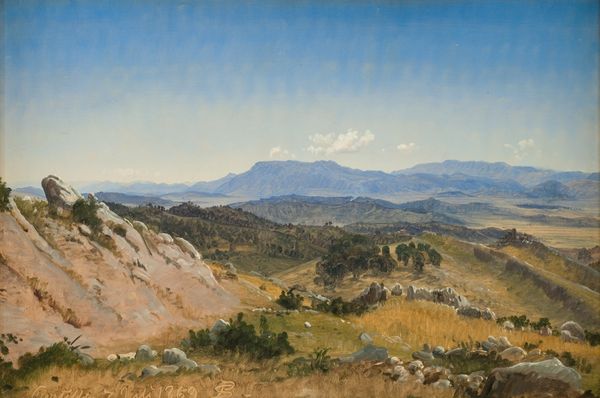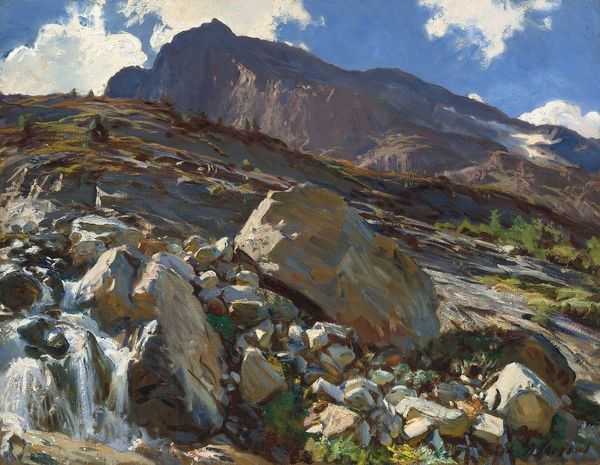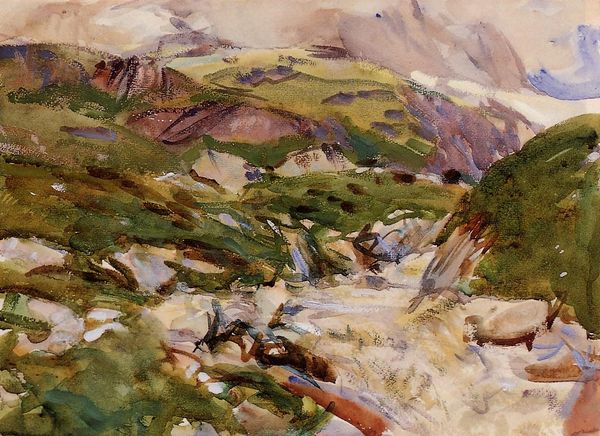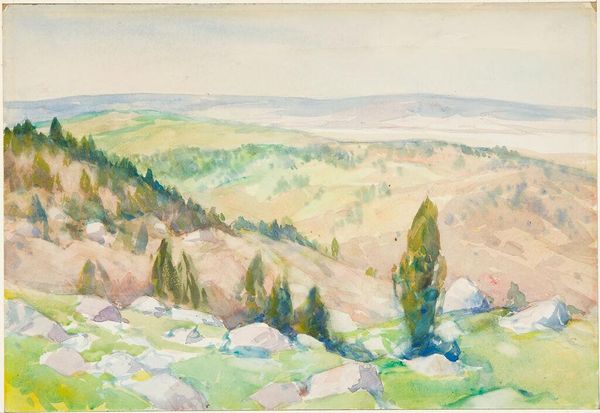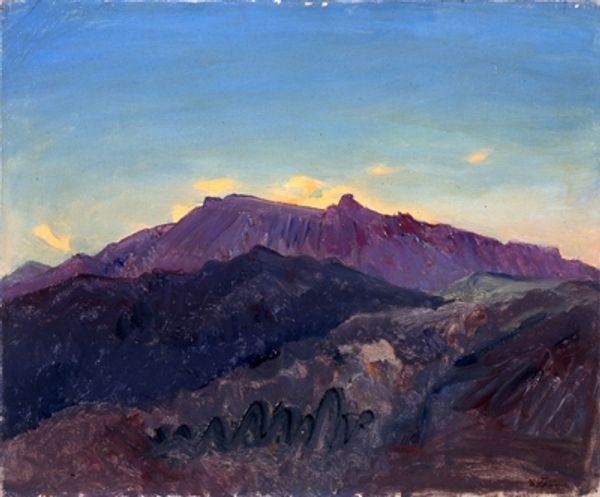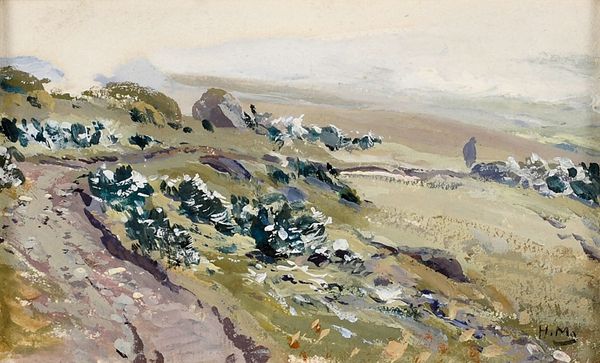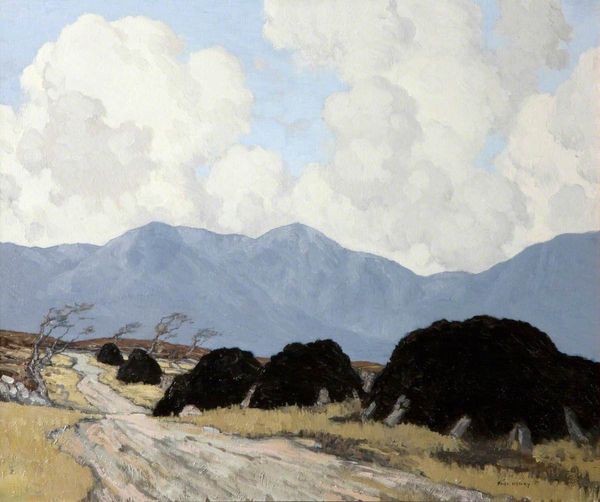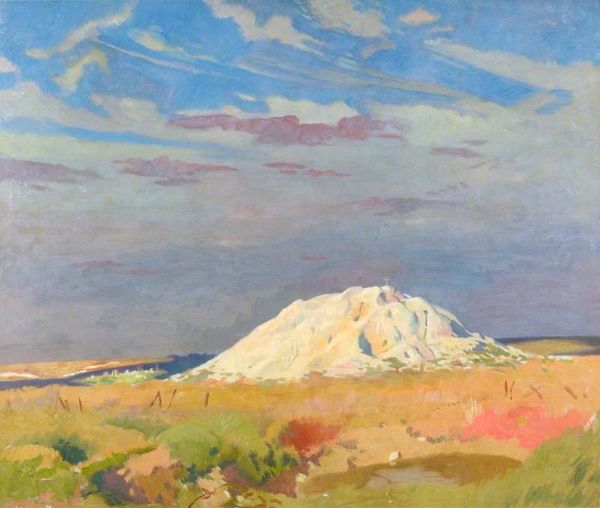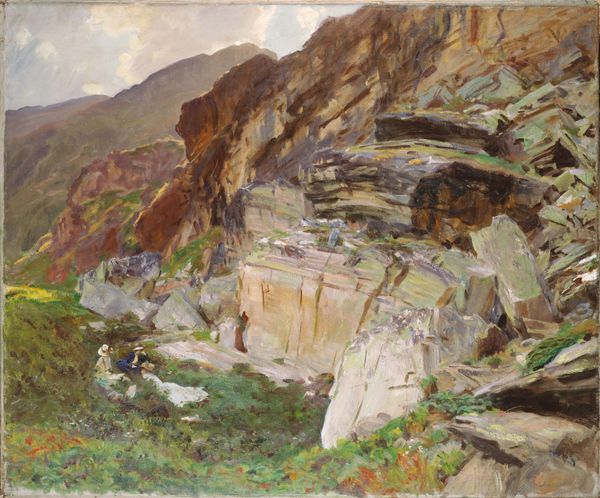
Copyright: Public domain
Editor: Here we have Charles Reiffel’s "Mountains," painted in 1935 using oil paints. I’m immediately struck by the textures, those thick strokes of paint give such weight to the mountains themselves, while the palette feels almost muted. What do you see in this piece? Curator: It’s interesting you note the textures. Looking at this from a historical perspective, "Mountains," created during the Great Depression, resonates with themes of resilience and the enduring power of nature amidst social upheaval. Editor: Resilience? I hadn’t considered that. Curator: Consider the context. During the Depression, many artists focused on distinctly American subjects as a way to explore the national identity. These often conveyed messages tied to socio-political concerns. Do you see any connection between these historical considerations and how Reiffel chose to depict the landscape? Editor: Perhaps the unyielding mountains represent stability in a time of uncertainty? They seem to be dominating the canvas. Curator: Precisely! And observe how Reiffel uses a relatively high vantage point. It puts the viewer in a position of observing the landscape. How does that visual strategy affect the audience, especially considering that period in history? Editor: It gives you a sense of control, almost like a reassurance that you can survey the situation, even when everything feels out of control? It’s more than just a landscape painting. It becomes a mirror reflecting societal needs and anxieties. Curator: Exactly! Reiffel gives us not just a representation of a mountain, but an emblem of endurance. Editor: Seeing it as an emblem, tied to its historical context, definitely adds another layer to my understanding of the artwork. I would’ve missed that nuance otherwise. Curator: That’s the power of historical perspective. Art rarely exists in a vacuum; it speaks volumes about the world it came from.
Comments
No comments
Be the first to comment and join the conversation on the ultimate creative platform.
